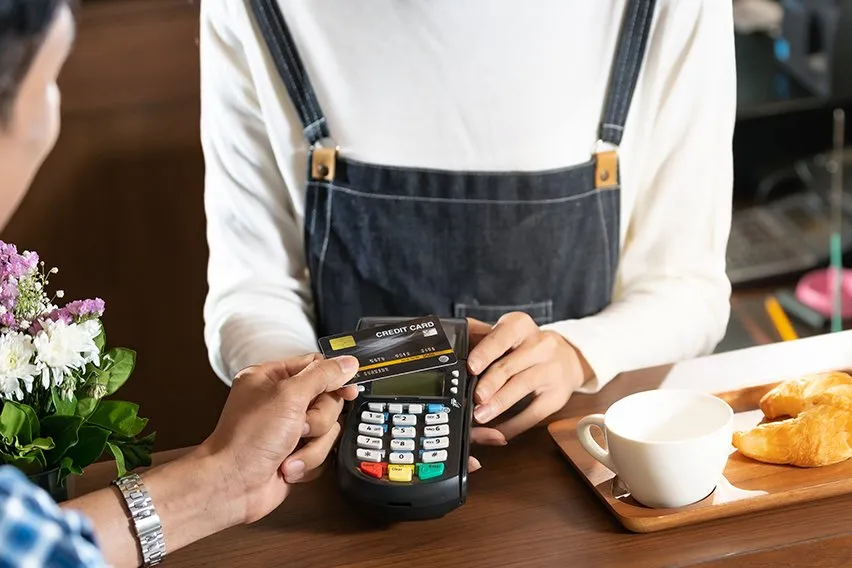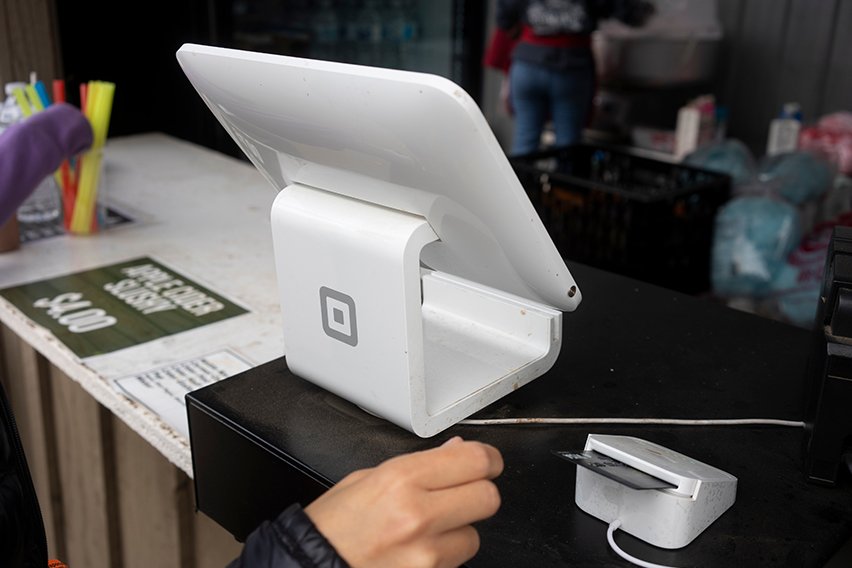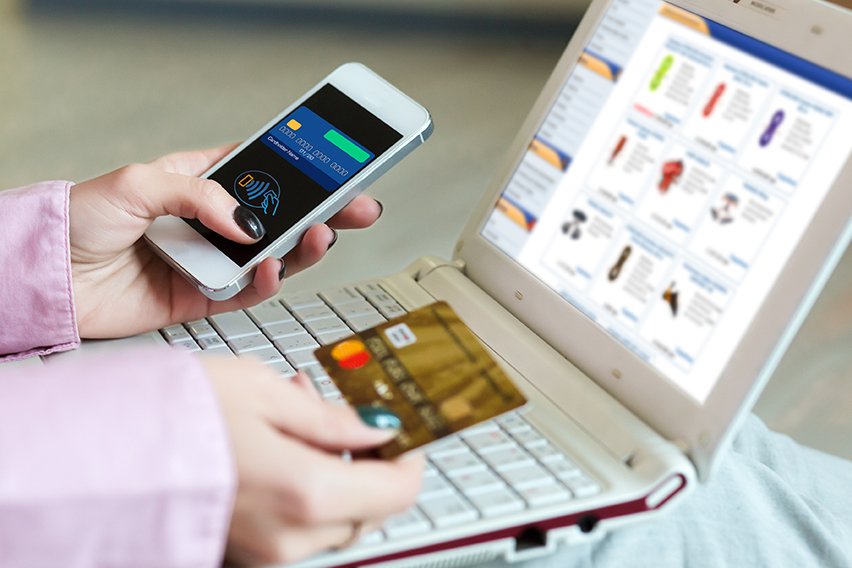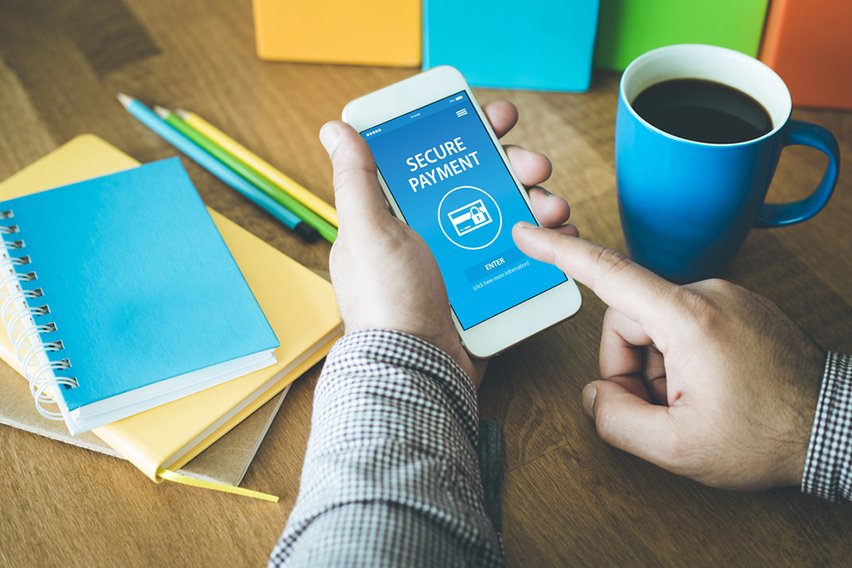What Is an Emv Chip in a Credit Card? A Small Merchant Guide

EMV stands for Europay, MasterCard, Visa. This is a set of standards created by these three companies that help ensure more secure transactions. These cards are used with certain types of payment terminals. The easiest way to think about them is as a “digital copy” of your physical card. Each time you use one at a terminal it creates a unique code based on the information from the card.
In this article, we’ll explore what EMV cards are and how they work. We’ll also discuss the pros and cons of using EMV chip credit cards and more. Finally, we’ll offer thoughts on whether or not you should switch to an EMV card reader for your business.
Here’s What We’ll Cover:
The Benefits of Using an EMV Credit Card
What Are the Cons to Using EMV Chip Cards?
Are EMV Cards Safer Than Regular Credit Cards?
Are all EMV Cards Contactless?
How Do You Know If Your Card is an EMV Chip Card?
The Importance of EMV Chip Cards Today
Frequently Asked Questions About EMV Chip Credit Cards
What Is an EMV Credit Card?
Again, EMV stands for Europay, MasterCard, Visa. An EMV credit card is a type of payment method that uses digital encryption to reduce the potential for fraudulent transactions. When you use one at a terminal, it generates a unique code every time. This means there’s no danger of your account information being duplicated and used by another person.
EMV credit cards are a form of chip card technology. This is especially true in the United States, where EMV credit cards work with a system known as Chip and Signature. This means that after inserting your card into the terminal you’ll need to sign for it. This is as opposed to providing a PIN.

Some History of EMV and Credit Cards
About 10 years ago, Visa announced that they were committed to reducing fraud with credit cards. As part of this initiative, they began working on chip-based credit card standards. These standards became known as EMV cards. The process makes it very difficult for fraudsters in stores or online to steal your personal data. These days you’ll find both EMV credit cards and debit cards.
Fast forward to today and chip cards are extremely common. The United States is one of the last major markets to make this change. They are currently in the process of migrating from magnetic stripe to EMV chip cards. This is part of an initiative called “EMV Migration.”
The Benefits of Using an EMV Credit Card
There are many benefits to using an EMV card. This section will discuss the benefits for the credit card issuer, the business and the customer.
Benefits for the customer
First, there’s the obvious advantage of having a payment method that’s virtually impossible for fraudsters to duplicate. This makes it far safer than any other type of credit card.
Second, the magnetic strip on traditional credit cards is easy for people to copy or steal. This means that anyone who has your card number can use it to make purchases online. They can even do this over the phone or in stores. With an EMV chip card this isn’t possible. This is because of the dynamic data they use.
Benefits for business owners
The increased security is also a benefit for business owners. This is because it makes them less vulnerable to fraud and counterfeit cards. It also means they’ll deal with fewer chargebacks and fake transactions. There are multiple other reasons that can lead to better sales and higher customer satisfaction rates.
First, EMV credit cards make checkout faster. Customers don’t need to juggle their wallet as they find the right card and enter their PIN number. This also means you can process transactions more quickly. This can be especially beneficial for small businesses that operate with 30-minute appointment windows or by appointment only.
Next, there’s the benefit of using EMV credit cards to meet PCI DSS compliance standards. As mentioned earlier, these are global security standards created by VISA and MasterCard. Having EMV cards in place can be a huge factor when it comes to your PCI rating.
Finally, you can’t discount the fact that using an EMV card has a psychological effect on customers. This line of thinking is based on the fact that most people will have a greater sense of trust for the business. Being able to use a chip card in a store may garner increased sales if competitors aren’t using this technology.
Benefits for credit card merchants
For merchants, there are several reasons to consider using EMV technology. First of all, your liability for credit card fraud is significantly reduced with chip cards. This is because they are extremely secure. If someone uses a counterfeit (or stolen) card to make a purchase, the merchant may be on the hook for the money.
Next, there’s the fact that credit card processing fees are lower with EMV cards. This is because of the high-level security involved with these types of transactions. Credit card companies know this, which is why they are willing to reduce fees for using chip cards.
What Are the Cons to Using EMV Chip Cards?
There are a few cons when it comes to using EMV chip cards.
Initial cost of the switch
For one, the transition from magnetic strip cards is costly. It may even be so expensive that some businesses decide not to make the switch at all. This can be a bigger issue for small businesses who don’t have a lot of capital available.
Switching to a new system
The other issue is the learning curve involved with using these types of cards. This includes not only how to use them, but educating employees on their importance. You may be required to get a new machine, change your cable setup and more. You also have to take into account that chip readers are in limited supply at the moment in some areas.
Inconvenience
Another downside is the fact that consumers may need to carry multiple credit cards in their wallet. In most cases, if the business only takes EMV cards, you’ll need to use your debit card. Some businesses will allow you to pay with either an EMV chip or magnetic strip card if they don’t have the new system in place yet. In addition, customers may not know initially if they should swipe or insert. This will only be an issue during the initial change.
Each person will likely have their own list of cons for using this technology. One thing is clear though, the benefits outweigh the cons in most cases.
Are EMV Cards Safer Than Regular Credit Cards?
In a word, yes. With this technology, it is extremely difficult for unauthorized users to clone cards and make fraudulent purchases. In addition, if someone does get a hold of your card information, it’s much more difficult for them to use it. If you accidentally give away your credit card information, people will have a much harder time using it to make fraudulent purchases.
As mentioned earlier, it’s difficult for small businesses to keep up with the latest technologies monetarily and through staff training. Despite this, people who own small businesses should still consider EMV chip credit cards. Even with the added cost, there are several benefits that may be worth it in the end.
Can EMV Chip Cards be Cloned?
Yes, they can. However, it is extremely difficult to do so. With traditional magnetic strip credit cards, cloning them is as simple as lifting the information off of the card with a skimmer. This can be done without ever needing to physically touch your card.
With EMV chip technology, this isn’t possible. This is because of the way the information is transferred. Instead of swiping your card, you insert it into a machine. This takes away all opportunity to collect the data on the magnetic strip alone.
In addition, having an EMV chip makes cloning cards extremely difficult because of how secure they are in general. Even if someone were to take the information directly from your card, it would be difficult for them to use.
Are all EMV Cards Contactless?
One of the benefits to EMV chip cards is that they are contactless. Instead of having to insert your card into a machine, you can simply tap it on the payment terminal. This convenience should not cause any security issues at all either.
Contactless transactions use wireless technology to read the information on the card. You tap your card against another machine or terminal and it gets your account number through this transfer. Once it has that, it can begin processing your payment.
This technology is very safe and should not cause any security issues. There are also no associated costs with this either. If your card does have the contactless symbol on it, you’re good to go!
How Do You Know If Your Card is an EMV Chip Card?
In most cases, it’s easy to know if your credit card is an EMV chip card. All you have to do is look at the front of your card. If your card has a small, reflective rectangle on it, you have a chip enabled credit card. This rectangle is typically on the front of the card on the left hand side.
If you’re looking to tell without having to check the front of your card, just swipe it in the machine when making a purchase. If there is no beep or error message and you can complete your transaction with ease, then you have an EMV chip card.

The Importance of EMV Chip Cards Today
If you are a small retailer, EMV chip cards may be something worth considering. With the added security features and benefits of EMV card technology, it can ultimately help protect your business. IT can reduce fraud and help with increased success rates for credit transactions.
When it comes to security for consumers, EMV cards are another step in the right direction. They will help reduce instances of fraud and give customers peace of mind when making purchases. They are significantly safer than regular magnetic-stripe cards and should be the standard going forward.
In short, EMV chip cards are a worthwhile investment that will benefit both consumers and small businesses alike. As technology advances, so do the security features of credit cards. If you have a small business, now is a good time to look into getting one of these credit card readers.
This article talked about EMV chip cards. You’ve learned how they work, their advantages and disadvantages and more. Hopefully this article answers all of your questions related to EMV and merchants.
Frequently Asked Questions About EMV Chip Credit Cards
Are EMV Chip Cards the Same as Regular Credit Cards?
No, they are not. With traditional credit cards, you swipe your card and rely on the information collected from the magnetic strip to complete the transaction. With an EMV chip card, you must insert your card into a terminal or machine instead of swiping it.
How Do I Set Up an EMV Chip Card?
It’s actually pretty simple to set up an EMV chip card. All you have to do is take your new card and insert it into the terminal when making a purchase. The machine will either read the information through wireless technology or via contactless payments.
Are EMV Chip Cards Safer to Use?
Yes, they are safer than regular cards in many ways. The biggest reason for this is because of how much more secure EMV chips are.
Are All EMV Chip Payment Terminals Contactless?
No, not all of them are. Some terminals only accept information from the chip. This will mean you have to insert your card into the machine instead of tapping it.
Are Small Businesses Required to Have EMV Chip Card Readers?
No, they are not required to have them. However, they may want to consider getting one soon. It will definitely become the new norm over the coming years.
Are you looking for more information like this? Be sure to check out our resource hub. We have plenty of articles just like this one! We’re here to help you and your small business.
RELATED ARTICLES

 Complete Guide to the 5 Best Credit Card Processors
Complete Guide to the 5 Best Credit Card Processors Virtual Credit Cards: What Are They & How Do They Work?
Virtual Credit Cards: What Are They & How Do They Work? What Is a Secure Payment System?
What Is a Secure Payment System? What Is an eCheque & How Does It Work?
What Is an eCheque & How Does It Work? What Is a Credit Balance?
What Is a Credit Balance? 5 Best Online Payment Methods In 2024
5 Best Online Payment Methods In 2024